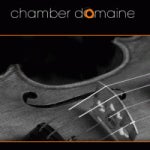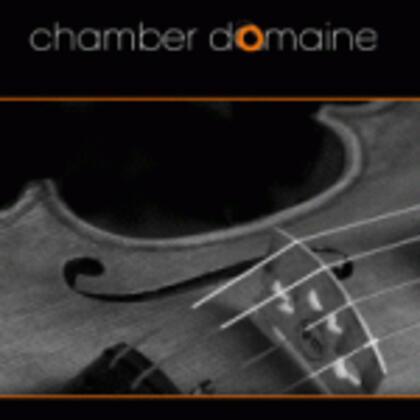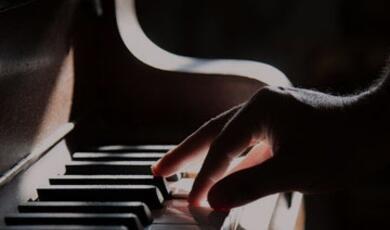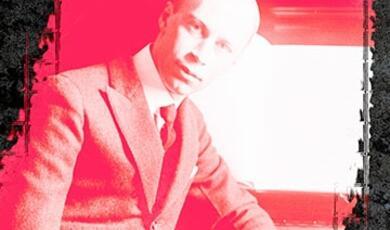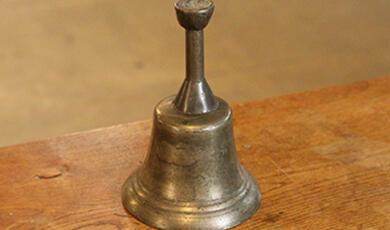Debussy and Mallarme: Symbolism and Les Mardistes
Share
- Details
- Transcript
- Audio
- Downloads
- Extra Reading
Les Mardistes was a group of intellectuals who met every Tuesday to discuss philosophy, art and literature Instigated by the poet Stephane Mallarme, its habitués included W B Yeats, Rainer Maria Rilke, Paul Verlaine, Stefan George, Paul Valéry and Claude Debussy. This group was to have a huge influence on the music of Debussy whose music is profoundly rooted in the philosophy and ideas found in this literature. The lecture will look at the way Debussy sets texts by Mallarme and Verlaine and explore the ways his music is influenced by literature.
The concert will include an arrangement of Debussy's delicious Prelude de L'Apres midi d'une Faune - a musical depiction of a Mallarme poem. There will be settings of Verlaine and Mallarme for Voice and Piano and a performance of Debussy's Cello Sonata.
Download Transcript
Debussy and Mallarmé
Lecture by Thomas Kemp
16/12/2009
Ladies and Gentleman, today's concert and lecture explore the links between Claude Debussy, Stephane Mallarmé and Symbolism. The concert illustrates Debussy's stylistic journey from one of his earliest works - the Piano Trio in G of 1880 through to the violin and cello sonatas of his late period. Indeed the Violin Sonata of 1916-17 was the last piece he ever performed before his death from cancer on 25th March 1918.
The main influence on French music and poetry in the late 19th century were the music - dramas and aesthetics of Richard Wagner. Charles Baudelaire initiated this infatuation in the 1860's and many writers and composers became influenced by Wagner's concept of theGesamtkunstwerk or total work of art where all the arts combine together in a single work to transcend the possibilities of individual media.
After the Franco-Prussian War in 1870, Wagner's music was banned in France, but many made the pilgrimage to Bayreuth to listen to his operas and meet the master. Debussy went in 1888 and 1889. Indeed in 1887 according to his friend, the writer Pierre Louys, Debussy won a bet that he could play the whole of Tristan and Isolde from memory at the piano!
This Wagnerian influence can be keenly heard in works such as La Demoiselle Elue (1887-8), the Cinq Poèmes de Charles Baudelaire (1890), Prélude à l'après midi d'un Faune (1892-94) and the opera, Pelléas and Mélisande (1893-95). However, the relationship with Wagner subtly changes in these works: in La Demoiselle Elue and the Cinq Poèmes the influence of Tristan and Parsifal is overt - the scale of the works, the harmonies, the melodic lines are Wagnerian as is the poetry which is rich in metaphor, allusion and the psychology of desire which underpins Wagner's librettos.
In Prélude à l'après midi and Pelléas, the Wagnerian influence is distilled and absorbed in a way that is mysterious and cryptic: the music has double meaning. Although unpublished, Debussy wrote an article in 1893 entitled 'The futility of Wagnerism.' Wagner had provided a starting point for the composer but Debussy moved away from his influence and much of this was to do with his relationship with poetry - notably Paul Verlaine, Pierre Louÿs and Stephane Mallarmé.
It is fascinating to trace Debussy's artistic development through the many songs he wrote throughout his career ranging from the saccharine, charming salon chansons of the 1880's such as Beau Soir, Mandoline and Nuit d'étoiles which were written for his lover, Madame Blanche Vasnier; the heady Wagnerian Baudelaire songs; the mysterious and capriciouscommedia dell'arte world of Verlaine and Louÿs; the illusive Trois Poèmes of Stephan Mallarmé; setting his own texts in Proses Lyriques and the patriotic settings of ancient French texts Charles D'Orleans and Tristan Lhermite.
The music is informed by the choice of text. The language of the music evolves from the words and his orchestral, chamber music and works for piano carry over the ideas, aesthetic, style and syntax of the songs. In this respect, they can be regarded as songs without words. As he was to confide to his biographer Laloy in 1909, that poetry and art that were the greatest influence on his music. When Debussy visited London in 1903, he went to the Turner exhibition at the National Gallery and regarded him as 'the finest creator of mystery in art.' He also subscribed to the magazine Pan which included reproductions of the latest works of art by Münch, Crane Khnopff and Vallotton. Debussy was also friends with many artists including Toulouse-Lautrec, Redon and Whistler.
Debussy absorbed much from his association with artists and writers. He spent a lot of time with Mallarmé, who surrounded himself with one of the most influential groups of poets, painters and thinkers in 19th century Paris. Meeting every Tueday, they were known as Les Mardistes and included Paul Verlaine, Oscar Wilde, W B Yeats, Rainer Rilke, Marcel Proust, Paul Valery and Debussy - Symbolism was the creed of this group.
One of the key ideas that came from Wagner was music being the highest form of expression - the liquid link that could bind together other art forms into something all encompassing and new. Many of the Symbolists believed that all art should aspire to be music - music being the most direct form of human expression. Paul Verlaine outlined this theory in his influential 'L'art poétique' of 1884 the idea being that through using rhyme, assonance, alliteration, illusion, metaphor one could write poetry that was 'music above all else.'
Stephane Mallarmé took this a step further. By using these devices, the old meanings of words, using arcane words that had long fallen out of use and silence, he created literature that had hidden meaning and sounded like music. Indeed, when Debussy asked Mallarmé for his permission to set his famous poem of 1865 Prélude à l'après midi d'une Faune to music, Mallarmé replied 'But I thought I had already done that!'
Prélude à l'après midi is a radical work - Pierre Boulez claims it is the first modernist piece of music. We are all used to the famous opening flute solo and the gorgeous, sumptuous harmonic language and orchestration. But why is this work so radical?
The opening flute solo, a chromatic flexible arabesque, has the potential to become a Wagnerian leitmotif that can be spun into a lengthy movement. Debussy avoids this by placing the theme (which starts on a C sharp) in different tonal areas - D major and E major. He is reorchestrating and reharmonising the music rather than treating the theme as a motif or subjecting the opening theme to a dialectic.
This theme is extended and reduced - the harmonies allude to Tristan but there is no quotation. This is a disintegration of Wagner.
The orchestration is spare - there is a lack of brass. The orchestra is smaller and there is no bombast.
Debussy also achieves rhythmical flexibility by changing the meter from 6/8, 12/8 and 9/8 to create music that is not defined by the bar lines and thus sounds free or improvised.
Incidently, the poem has the same number of lines as the music has bars. Debussy was obsessed with numbers and natural phenomena such as the Fibonacci sequence and the golden section, which he incorporates into his music - providing a structure.
Mallarmé was delighted with the piece. 'What a marvel! Not in the slightest in accord with my text except that it goes further in nostalgia and light, so delicate, disquieting and rich.'
Debussy described his music as not literally describing the world of real things but exploring 'the mysteries between nature and the imagination.' Prélude à l'après midi captures the mood and atmosphere of the poem and the way in which it deconstructs Tristan and assimilates Wagner into something completely different and mysterious is disquieting.
Thus, like the poetry, the music demands that the listener really listens in order to begin to understand what the music is about. It is not a literal depiction of the poem but an illusion where the music creates atmospheres that are inherent in the poem 'atmospheres that are created by an elaborate, coded and technical musical language.
Pelléas and Mélisande - the work that was to put Debussy on the international map continues this process of deconstructing Wagner - alluding to the key structure of Parsifal and having fleeting quotations and reminiscence which are brilliantly explored in Robin Holloway's Debussy and Wagner (Da Capo, 1982). Pelléas is an exorcism of the intoxicating power of Wagner's music which is so evident in the early works of Debussy - a process that is complete in The Golliwogs Cakewalk from Children's Corner where the Tristan chord and the opening gambit are used in a Jazz inspired piece for kids - a send up of 'serious' Wagner and his 'religion'.
In Pelléas, the melodic writing follows the inflection of speech. Debussy is almost writing speech melody again showing the influence of Mallarmé and the idea that words should be like music. In 1897, Mallarmé wrote his masterpiece Un Coup de Dés and by using blank space in the poem designed to explore silence - Mallarmé perhaps comes the closest of all writers in creating a musical language in poetry. Although not apparent in Debussy's early setting of Mallarmé's Apparition in 1882 the settings of Mallarmé's Soupir, Placet Futile and éventail in 1913 show this use of silence and speech melody, which is so far removed from the sugery world of the early Piano Trio in G. Written in 1880, Debussy was working for Madame Nadezhda von Meck - Tchiakovsky's patron. The journey from this piece to the Violin Sonata of 1917 is extraordinary.
The poetry of Paul Verlaine and Pierre Louÿs helped Debussy develop his distinctive. Both symbolists, their poems explore the world of commedia dell' arte and arcadia and all its characters - nymphs, sylphs, fauns, Pierrot, Scaramouch, and the Spanish Pirate. Debussy creates a music that again alludes to the poetry - whole tone scales for the erotic, pentatonic for the exotic, modes for the arcane, parallel chords, bitonality and unprepared modulations effortlessly combined with conventional tonality to create one distinctive musical language. And that is just on the level of melody and harmony.
Debussy also uses rhythm and meter to create a feeling of freedom in his music. Syrinx - a work originally entitled Flute de Pan - was a piece for solo flute to be performed during the scene changes in Pierre Louÿs play, Psyche. The score was without bar lines and the work was to be performed in the dark - again the music is there to create atmosphere and mystery and a feeling of time being suspended. This suspension also has a lot to do with the fact that this music is not descriptive - trying to forward the plot or describe a scene - it is an illusion.
The opening of the Violin Sonata also uses rhythm in an innovative way. The music is in ¾ time but the opening chords in the piano are each two bars long. When the violin enters in bar 5 it plays two hemiolas that span four bars. We have no sense of the music being in 3/4!
In 1889, Debussy visited the Great Exhibition in Paris and became fascinated by Javanese Gamelan, Japanese painting (he used a painting by Hokusai for the front cover of La Mer) and Chinese and Japanese theatre. This orientalism can be heard in the finale of the Violin Sonata and the Finale of the Cello Sonata - in the repetition of two notes as an oscillating pattern, pentatonic melodies and the repetitive four note patterns found in Gamelan. These are used in the sonatas as melody, accompaniment and they generate the structure.
Both Mallarmé and Debussy were passionate anglophiles. Mallarmé taught English and Debussy visited Britain seven times prior to the First World War. Escaping from a scandal involving his estranged wife, he wrote La Mer in the Grand Hotel in Eastbourne. In both the Cello and Violin Sonatas, some of the fast music sounds like a Scottish reel!
To conclude, all these different musical elements are underpinned by a deep philosophy based in the poetry. Whilst Debussy set only four songs to Mallarmé texts and the Prélude à l'après-midi d'un faune, Mallarmé's influence is profound. It was the idea that music like poetry can be mysterious and illusive by drawing on different elements and inspirations to create a deep language that has to be endlessly explored and examined in order to be understood. Debussy fulfils the Symbolists goal of making music a religious experience - putting us in touch with something intangible.
Further Reading
R Holloway: Debussy and Wagner, Da Capo Press, 1982
R Howat: Debussy in Proportion: A Musical Analysis (CUP, 1983)
R Nichols: Debussy Remembered (London, 1992)
R.L Smith, ed Debussy Studies (CUP, 1997)
N Boulanger: Lectures on Modern Music Rice University Pamphlet (1926)
F Lesure: Claude Debussy Grove Dictionary
©Thomas Kemp, Gresham College 2009
Part of:
This event was on Wed, 16 Dec 2009
Support Gresham
Gresham College has offered an outstanding education to the public free of charge for over 400 years. Today, Gresham plays an important role in fostering a love of learning and a greater understanding of ourselves and the world around us. Your donation will help to widen our reach and to broaden our audience, allowing more people to benefit from a high-quality education from some of the brightest minds.


 Login
Login
